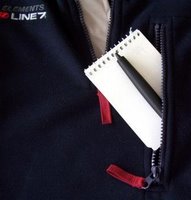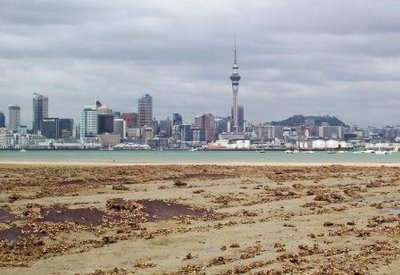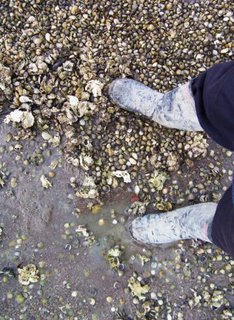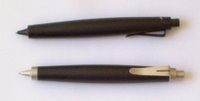I do a bit of volunteer ecological conservation work, and here in New Zealand I think it’s fair to say that birds are the main focus of conservation. Many of you may not realise, but New Zealand was the great “avian experiment”. Basically there are no land mammals native to New Zealand. That means no mice, rats, rabbits, cats, dogs, weasels, ferrets, foxes, wolves, pigs, deer, antelope, lions, buffalo – nothing! NOTHING! Just birds, lizards and insects. We don’t even have snakes or scorpions, and only one rare species of mildly venomous spider. The birds of New Zealand filled all those ecological niches that mammals take elsewhere – huge flightless gigantic moa took the place of all the grazing animals, kiwi as badgers, small species sneaking through the grass as mice and rabbits, etc, etc. When humans first reached NZ about 1,000 years ago and introduced mammals it was all over. Massive ecological destruction. Many native species were wiped out; most of the remainder were decimated.
For many years I have studied the small number of shorebirds that live along a part of the local coastline. Some of them are endangered species, so when the adjacent motorway was to be expanded there were a few issues regarding the birdlife. The motorway construction has many requirements for environmental protection, and because of my familiarity with the area I ended up getting hired to monitor the impact on the shorebirds. So, on the weekends I get paid to pursue my hobby! Sure it’s only a few dollars an hour, but I was doing it anyway. I have reviewed the Lamy Scribble over on Pencil Revolution, but here’s some real life, what my Scribble gets up to, because it’s my first choice when heading out into the field.
 Getting ready for a monitoring round of the motorway construction sites, here’s some of my basic equipment. Roughly clockwise from top left – gumboots, high visibility vest, safety helmet, tripod & telescope, binoculars, notebook & Scribble, flashing beacon for the car. I have to wear vest and helmet on site – there’s no chance of sneaking up on the birds!
Getting ready for a monitoring round of the motorway construction sites, here’s some of my basic equipment. Roughly clockwise from top left – gumboots, high visibility vest, safety helmet, tripod & telescope, binoculars, notebook & Scribble, flashing beacon for the car. I have to wear vest and helmet on site – there’s no chance of sneaking up on the birds!
 Scribble clips nicely into a small notebook (76 x 112mm, 3 x 4 ½ in), which in turn fits nicely into the chest pocket on my bushshirt. I find that the chest pocket is convenient to get to, and it’s high up so stays dry if I stumble in a swamp, etc.
Scribble clips nicely into a small notebook (76 x 112mm, 3 x 4 ½ in), which in turn fits nicely into the chest pocket on my bushshirt. I find that the chest pocket is convenient to get to, and it’s high up so stays dry if I stumble in a swamp, etc.WARNING: The following images are not the New Zealand of The Lord of the Rings, The Last Samurai, King Kong, NZ Adventure Travelogues, David Attenborough documentaries and so on. Stop now if you if you cannot stand the pain of having your illusions shattered.
Here’s a few shots of one main construction area. The shoreline is only a few hundred metres away, and the wide open, bare areas are quite attractive to many nesting shorebirds. Basically the foreshore has been tar-sealed over, so any wide open flat area, close to the coast, with not much vegetation, will do as a substitute beach.


One pair prospecting for a nice place to nest.

 They nest on the ground, just a little scrape in the sand or dirt. There are only about 500 pairs of these birds left in the world. I have a licence to catch and band chicks, but it’s a fairly even contest, as the chicks hide very well, and out in the mud they run pretty much as fast as I do. If they are near the water they also swim well, and in desperation they may dive under and “fly” underwater. That’s an interesting sight – their wings haven’t grown enough to fly in air, but they can fly in water.
They nest on the ground, just a little scrape in the sand or dirt. There are only about 500 pairs of these birds left in the world. I have a licence to catch and band chicks, but it’s a fairly even contest, as the chicks hide very well, and out in the mud they run pretty much as fast as I do. If they are near the water they also swim well, and in desperation they may dive under and “fly” underwater. That’s an interesting sight – their wings haven’t grown enough to fly in air, but they can fly in water. Another motorway section is accessed through this tunnel.
Another motorway section is accessed through this tunnel.You emerge here. At low tide there are large areas of mudflat exposed, which is good feeding for shorebirds – lots of tasty crabs, shellfish and so on. It’s a bit of a grey old day looking across the harbour to the city centre.

 It’s a muddy job but someones got to do it.
It’s a muddy job but someones got to do it.Luckily most of the mud is pretty firm in this area so you don’t usually end up more than ankle deep, but I once came here to find a lady sunk up to her waist in the mud. She and her husband were “rock-hounds”, collecting little rocks and stones and she found a soft-patch in the mud. Once you are in, the suction is really strong, no way out. As rock collectors they had shovels, but it still took nearly an hour for her husband and I to dig her out without getting stuck ourselves. The tide was coming in and the tidal range here is about 3.6 metres (12 feet) so in a couple of hours she was going to be six feet under, literally.
 Here’s a shot from the same place looking the other way – back to shore, rather than across the harbour to the city centre. The little shellbank pushed up against the sea-wall is an important place for the shorebirds. The motorway is not all bad – not many people, cats or dogs make it alive across the motorway to disturb them on their little shellbank! They have habituated to the traffic so don’t recognise it as a threat. Wheels = OK, 2 or 4 Legs = Danger.
Here’s a shot from the same place looking the other way – back to shore, rather than across the harbour to the city centre. The little shellbank pushed up against the sea-wall is an important place for the shorebirds. The motorway is not all bad – not many people, cats or dogs make it alive across the motorway to disturb them on their little shellbank! They have habituated to the traffic so don’t recognise it as a threat. Wheels = OK, 2 or 4 Legs = Danger.So, as I’m wandering around in the mud, Scribble is busy recording how many birds are seen, where, evidence of nesting, etc. All good data.
 I suppose I could argue that Scribble is actually the provider of my pencils. To try and keep my pencil expenditure under some sort of control, I have this idea that my pencil budget is the income from this part-time job. Sort of seems appropriate, one hobby funding another. But on the other hand, if the pencil budget has been spent, and my wife has just had one of those really expensive haircuts, well…..
I suppose I could argue that Scribble is actually the provider of my pencils. To try and keep my pencil expenditure under some sort of control, I have this idea that my pencil budget is the income from this part-time job. Sort of seems appropriate, one hobby funding another. But on the other hand, if the pencil budget has been spent, and my wife has just had one of those really expensive haircuts, well…..If any of you are serious movie fans, then the tunnel and shellbank area shown in the photos above are one of the locations in Vincent Wards movie The Navigator.





5 comments:
Wow -- what a great post and insight into life along the shore. I really enjoyed getting a glimpse of the "real" New Zealand.
One thing I wondered -- what do you do if it's raining? Years ago I worked as a sportswriter for the local newspaper, and covering (American) football games in the rain, taking notes while standing on the sidelines, was always an adventure. Pencil worked a little better than pen, but once the paper was good and wet is was all over.
The rain. Yes, wet paper is pretty much game over. Luckily though most "birding" is a fair weather activity, particularly for me. Rain gets on your binoculars and telescope, and/or eyepieces fog up, the rain reduces visibility, so there's usually not much point in going out in the rain. There are though some species that you do search for specifically in the rain. Also in my motorway work, the birds are in the nesting season so its unethical to disturb them off their nests in the rain as the eggs can quickly become chilled and die. This is also the case with young chicks that cannot thermoregulate. So, I don't do much work in the rain.
If I am going out in the rain then its usually only sporadic short notes so I can usually keep the paper dry by shielding with my body, etc, although it is a bit difficult. Serious folk out in the wet though often use one of those waterproof papers "Rite In The Rain" or "AquaScribe", etc. Some are good for pencil, some for pen.
The "real" New Zealand. Well the New Zealand of LOTR, travelogues, etc does exist, but there are also more mundane everyday parts as well, that you don't see so much on TV and movies. I might have to put up a few LOTR sort of photos to counter my motorway / city photos to present a "fair and balanced view".
Actually I should probably also elaborate on the mud stuff a little. Basically as a rule of thumb, in NZ the foreshore is muddy in harbours and estuaries, and sandy beach on the ocean coast. There is also some rocky coast. Again as a rule of thumb, beaches on the east coast and far north, are "normal" white sand, but beaches on the west coast are BLACK sand. Yes, the sand is black, as it is iron/titanium sand. In summer the black sand gets blisteringly hot, you can't stand on it in bare feet.
birds and raccoons are my favorite creatures. Raccoons are like cute cunning bandits with puppy eyes and i like it how birds fly. Are the lamy 2000 and scribble your most widely used pencils?
Wes, yes, 2000 and Scribble are two of my most commonly used pencils.
Post a Comment